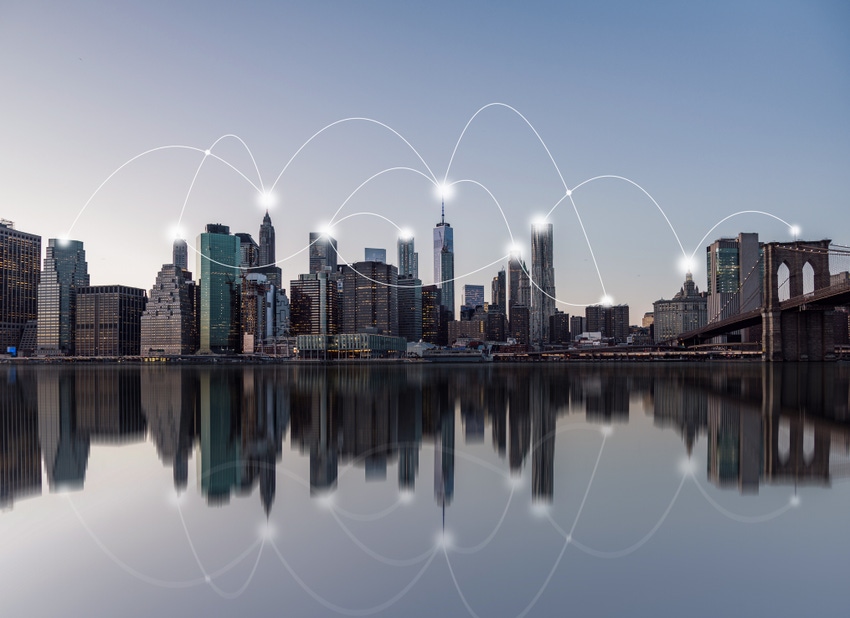ZenFi Networks is partnering with CityBridge, to install 5G-enabled Wi-Fi kiosks throughout the city
February 4, 2022

New York City’s failed LinkNYC Wi-Fi kiosk program is getting a reboot and an upgrade.
Wireless-infrastructure provider ZenFi Networks is partnering with the original operator, CityBridge, to install 5G-enabled Wi-Fi kiosks throughout the city, starting with the outer boroughs and Manhattan north of 96th Street, areas disproportionately underserved by internet options.
Under the deal, ZenFi, a longtime city franchisee for information services and mobile telecom, will invest $200 million in CityBridge. The company expects 25% of that investment will be put toward extending fiber infrastructure to every community district in the city. ZenFi will then leverage that expanded connectivity to grow the city’s usable broadband fiber footprint.
“The city is focused on being a hub for innovation and driving infrastructure equitably throughout the city,” CityBridge CEO Nick Colvin said. “LinkNYC is the largest program focused on solving these issues and promoting digital equity in the largest city in the U.S.”
At 32 feet tall, the new kiosks — Link5G — are a far cry from their predecessors, which were roughly one-third the height. The multistory stature of the new “street furniture” is necessary to accommodate the 5G signal, a key component of the revamp.
The new kiosks will retain the original LinkNYC functionalities, which include free high-speed Wi-Fi, free nationwide digital calling, access to government and social services, dissemination of city and community information, free advertising for local businesses and USB ports for free device charging. The original kiosks will remain in operation, at least for now, during the 5G rollout.
Currently, the Link5G towers are only approved for the city’s industrial and commercial districts. The city’s Public Design Commission (PDC), which granted the limited approval, required further study of the financial feasibility of the initiative before allowing the streetscape-altering equipment to be installed in residential areas.
“To fulfill the original promise of bridging the digital divide and providing equitable access to free Wi-Fi for all New Yorkers across all neighborhoods, the PDC will need to expand the approval to include residential areas,” Colvin said, adding that he expects expanded approval to come later this year.
CityBridge has committed to building at least 739 new links in 13 underserved districts across all five boroughs. The city selected the districts based on a lack of broadband options, lower median income, a lack of LinkNYC kiosks and high pedestrian and street traffic. Installation of the first of the more than 2,000 Link5G kiosks slated for citywide deployment is set for this summer, and the complete rollout will take several years.
The aesthetics of the towers have been one of the program’s primary hurdles. The final iteration is the result of close collaboration between wireless carriers, the PDC and CityBridge.
Each stainless-steel tower is topped by a 19.5-foot transmission bay housed in a slightly translucent gray-blue “shroud.” Each bay is divided into five units, two of which are set aside as millimeter-wave bays for ultra-fast 5G providers, while another two can provide additional 5G service or serve as sub-6GHz shared bays for 4G LTE and 5G and/or IoT to support neutral host providers. The fifth bay will provide improved free public gigabit WiFi.
The towers’ ability to host up to four 5G providers is a critical component of the new business model, which uses revenue from 5G cellular services to bolster advertisement income. The original LinkNYC program relied solely on advertising revenue, which almost led to bankruptcy in 2019, according to a presentation from ZenFi, CityBridge and New York’s Department of Information Technology & Telecommunications.
About the Author(s)
You May Also Like




.png?width=700&auto=webp&quality=80&disable=upscale)
.png?width=300&auto=webp&quality=80&disable=upscale)


.png?width=300&auto=webp&quality=80&disable=upscale)